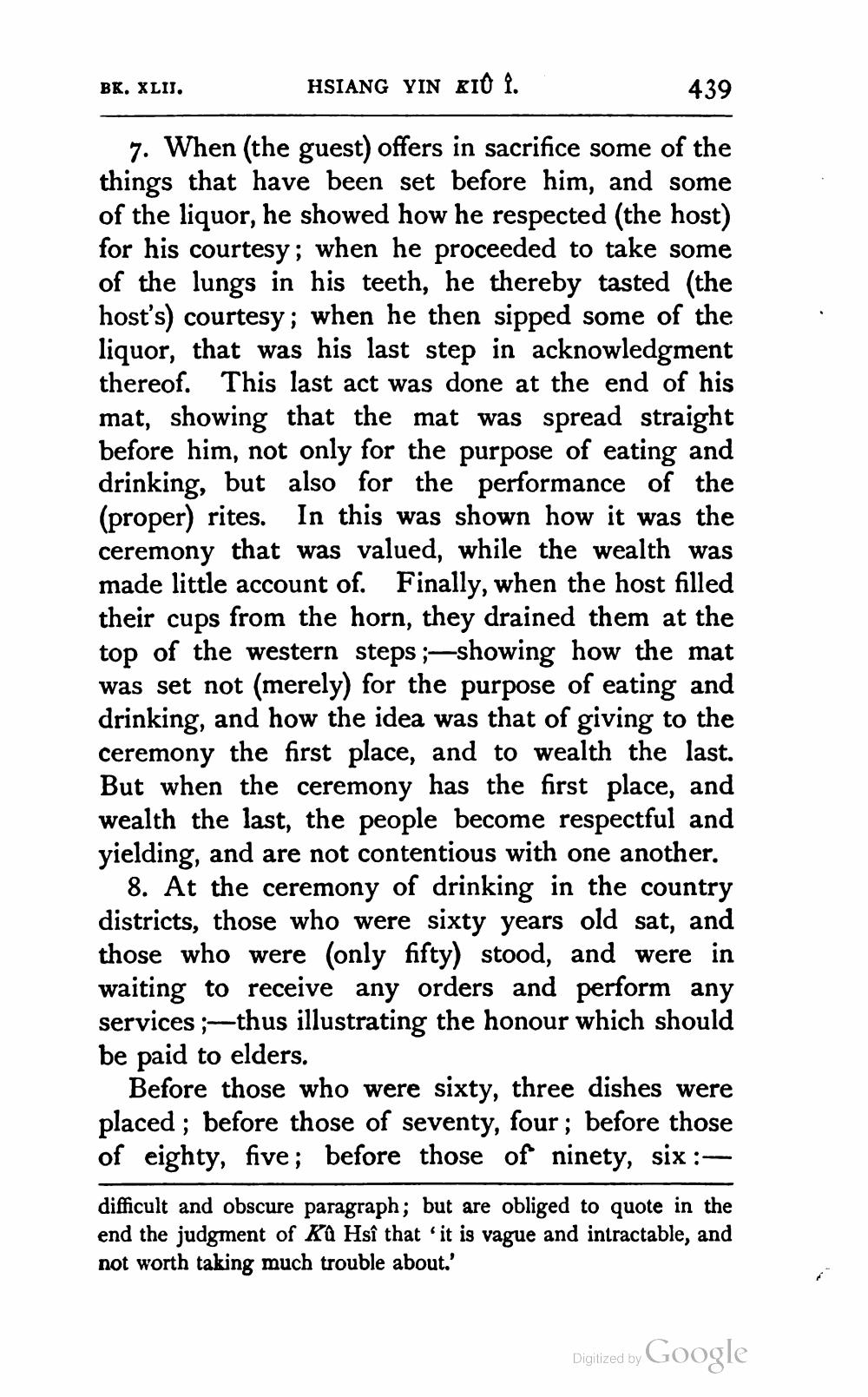________________
BK, XLII.
HSIANG YIN KIÙ I.
439
7. When (the guest) offers in sacrifice some of the things that have been set before him, and some of the liquor, he showed how he respected (the host) for his courtesy; when he proceeded to take some of the lungs in his teeth, he thereby tasted (the host's) courtesy; when he then sipped some of the liquor, that was his last step in acknowledgment thereof. This last act was done at the end of his mat, showing that the mat was spread straight before him, not only for the purpose of eating and drinking, but also for the performance of the (proper) rites. In this was shown how it was the ceremony that was valued, while the wealth was made little account of. Finally, when the host filled their cups from the horn, they drained them at the top of the western steps ;-showing how the mat was set not (merely) for the purpose of eating and drinking, and how the idea was that of giving to the ceremony the first place, and to wealth the last. But when the ceremony has the first place, and wealth the last, the people become respectful and yielding, and are not contentious with one another.
8. At the ceremony of drinking in the country districts, those who were sixty years old sat, and those who were (only fifty) stood, and were in waiting to receive any orders and perform any services ;-thus illustrating the honour which should be paid to elders.
Before those who were sixty, three dishes were placed ; before those of seventy, four; before those of eighty, five; before those of ninety, six :
difficult and obscure paragraph; but are obliged to quote in the end the judgment of Ka Hsî that it is vague and intractable, and not worth taking much trouble about.'
Digitized by Google




